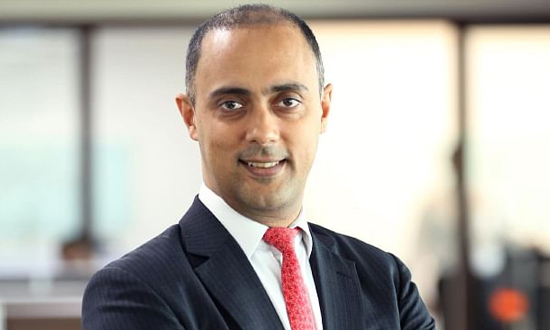The economic and investment climate is prone to periods of troughs and peaks, which lend it volatility and cause uncertainty in investment returns. For any investor, protecting their portfolio from this inherent volatility while at the same time generating returns becomes imperative.
There are several investment instruments that are available in the market. A robust portfolio should ideally have a mix of instruments that can provide both safety and growth of your investment. To achieve the former, i.e. safety or capital preservation, investors can consider fixed-income investments. Here’s how it works.
What Fixed Income Investments Mean
The very term “fixed income investments” refer to instruments that promise a “fixed income” in the form of interest payments. For fixed income investments, the rate of interest payment remains fixed or constant over the tenure of the investment, irrespective of market fluctuations.
Determining the value of a fixed income investment
The final value or maturity value of a fixed income investment is calculated at the time it is issued and made known to the investor, i.e. the time of investment. Thus, as an investor you know exactly what you will earn at the end of the investment period. This brings in the desired certainty and stability that investors aim for as they plan their wealth preservation.
Fixed income investment may not always give fixed returns
It is important to note that even within the wide gamut of fixed income investments, not all instruments offer fixed returns. In the case of bonds issued by the government or by specific corporations, investors are assured of fixed coupon or interest payments.
On the other hand, there are several other fixed income investments like debt mutual funds and structured products that do not provide fixed returns and are thus riskier than plain vanilla bonds but offer higher yields particularly in a low interest rate environment.
Role of Fixed Income Investments In Asset Allocation
The key to maximising risk-adjusted returns is to build a diversified portfolio that is spread across multiple assets. By spreading portfolio investments across multiple assets you can ensure that a sharp downfall in the value of any one asset class does not have a large impact on portfolio returns. Thus, it helps in risk mitigation and maximising risk-adjusted returns.
Things to keep in mind while creating your financial portfolio
To create a robust long-term portfolio you can consider adopting the core-satellite approach. This approach implies the core of the portfolio should focus on wealth preservation while the satellites should focus on wealth growth.
From that perspective, fixed income investments can play an integral role in forming the core of the portfolio. Since these investments focus on downside protection, stability, and liquidity they can make the core of the portfolio robust and strong enough to weather volatile investment environments.
However, it is important to note that these investments better serve the purpose of portfolio protection rather than return maximisation. Thus, the satellites of the portfolio can invest in equity and alternative investments to maximise the return potential of the portfolio.
By following this approach, investors can meet the dual objective of wealth preservation and growth. Further, due to the inherent stability that these investments offer, they are well-suited for investors who are risk averse or have a low threshold for risk.
Benefits of Fixed Income Investments
Depending on the investors’ financial goals, risk profile, and investment timeframe, fixed income investments can offer potential benefits. Some of these include:
Diversification from stock market risk
It is generally assumed that fixed income investments are relatively safer or less riskier than equity investments. This benefit stems from their ability to offer fixed returns even in changing macro and micro-economic environments.
For an investor looking to generate compelling returns over the long-term, a skew towards equities would be a viable choice. However, this skew also increases the risk in the portfolio. Thus, by allocating a certain proportion of the portfolio in fixed income investments, investors can potentially offset the losses incurred during equity market downturns, thereby mitigating overall portfolio risk.
Capital preservation
Capital preservation refers to protecting the absolute value of the invested amount. Capital preservation can be achieved only by investment in certain instruments like specific fixed income options.
Since these investments carry relatively lesser risk compared to equities and offer a fixed return over a period of time, they can offer investors the desired capital preservation. However, investors must be aware of inflation risk, i.e., the investments losing value over time due to a general increase in prices.
Income generation
Due to their low-risk nature, most fixed income investments do not offer very high returns. However, what they do offer is a steady source of income. Investors either receive a fixed amount of income at regular intervals in the form of interest payments on their holding or they earn a cumulative amount that includes the principal plus the total interest earned at the end of the holding period.
Total return
Some fixed income investments can also potentially offer attractive returns. However, it is important to remember that these fixed-income investments assume higher levels of risk and may not provide the same kinds of downside protection that vanilla fixed-income investments offer.
Risks To Keep In Mind When Investing in Fixed Income Investments
There are four major risks associated with fixed income. These include:
Interest rate risk
Bond prices have an inverse relationship with interest. When interest rates rise the price of a bond falls. This means that the value of the fixed income investment in your portfolio will fall with a rise in interest rates. This could cause some volatility in your portfolio.
Inflation risk
Inflation refers to the general increase in prices and impact on an individual’s purchasing power. One of the main benefits of fixed income investments is that they offer a fixed rate of return. However, if the rate of return is less than the rate of increase in prices, i.e., inflation then the investor will lose purchasing power. But this condition is rare in a stable economy.
Credit risk
Plain vanilla fixed income investments offer a fixed rate of return that is generally lower than the return offered by several investments. However, investors can enhance their fixed income returns by taking higher levels of risk and investing in corporate bonds. Such bonds can offer higher returns but are also relatively riskier.
The higher risk stems from the possibility that the corporate issuer may default on the obligation because of which the investors might not receive the full value of the principal amount invested. This refers to credit risk.
Liquidity risk
This refers to the bondholders’ inability to easily sell the fixed income investment at a fair value. These risks can be astutely managed by spreading the portfolio across multiple types of fixed income investments
Fixed Income Investment Options
Within the fixed income asset class, investors have the option to invest in a broad range of instruments that offer varying levels of returns and fall at different points on the risk spectrum.
Investors looking for guaranteed returns can consider investing in the following:
Public Provident Fund (PPF)
Bank Fixed Deposits (FDs)
Government issued bonds
National Savings Certificates (NSCs)
Debt Mutual Funds
For more sophisticated investors who are looking for higher risk-adjusted returns, there are various options like the following:
Corporate FDs
Bonds
Non-convertible Debentures (NCDs)
Structured debt products
These can potentially generate higher yield in a low interest rate environment with a slightly higher level of risk.
Tax Treatment of Fixed Income Investments
The tax treatment of fixed income investments depends on the type of investment. Some points to note include:
Certain investments like those made in PPF, NSCs, 5-year bank deposits, etc., can be claimed as a tax deduction under section 80C of the Income Tax Act.
Gains made from investment in debt mutual funds are bifurcated into short-term capital gains, i.e., gains made on an investment redeemed within three years from the date of allotment or purchase and long-term capital gains, i.e., gains made on investments redeemed after a period of three years. The short-term capital gains (STCG) tax is as per the applicable tax slab rate of the investor. The long-term capital gains (LTCG) tax is 20% with indexation benefits.
The taxation on bond investments will vary depending on the holding period and whether they are listed or unlisted. To better understand the tax implications of fixed-income investments it would be advisable to consult your advisor.
In the case of tax-free bonds, the interest earned on these bonds is exempt from tax. However, the capital gains arising from the sale of tax-free bonds are still taxed as per the above guidelines.
Bottom Line
Investors can weather the constantly shifting investment environment by diversifying their investments across multiple asset classes. Some asset classes like fixed income investments provide fixed returns and are relatively safe. These investments provide the investor with the necessary stability and visibility of future returns.
On the other hand, equity investments have the potential to generate compelling returns over the long-term. However, these investments are associated with higher levels of risk. The mix of these asset classes in the portfolio will depend on the investor’s risk profile, return requirements, and investment timeframe.
It is important to remember that only a stable portfolio with a solid foundation will be able to generate returns over the long-term. From that perspective, fixed income investments play an important role in helping build a strong portfolio.





